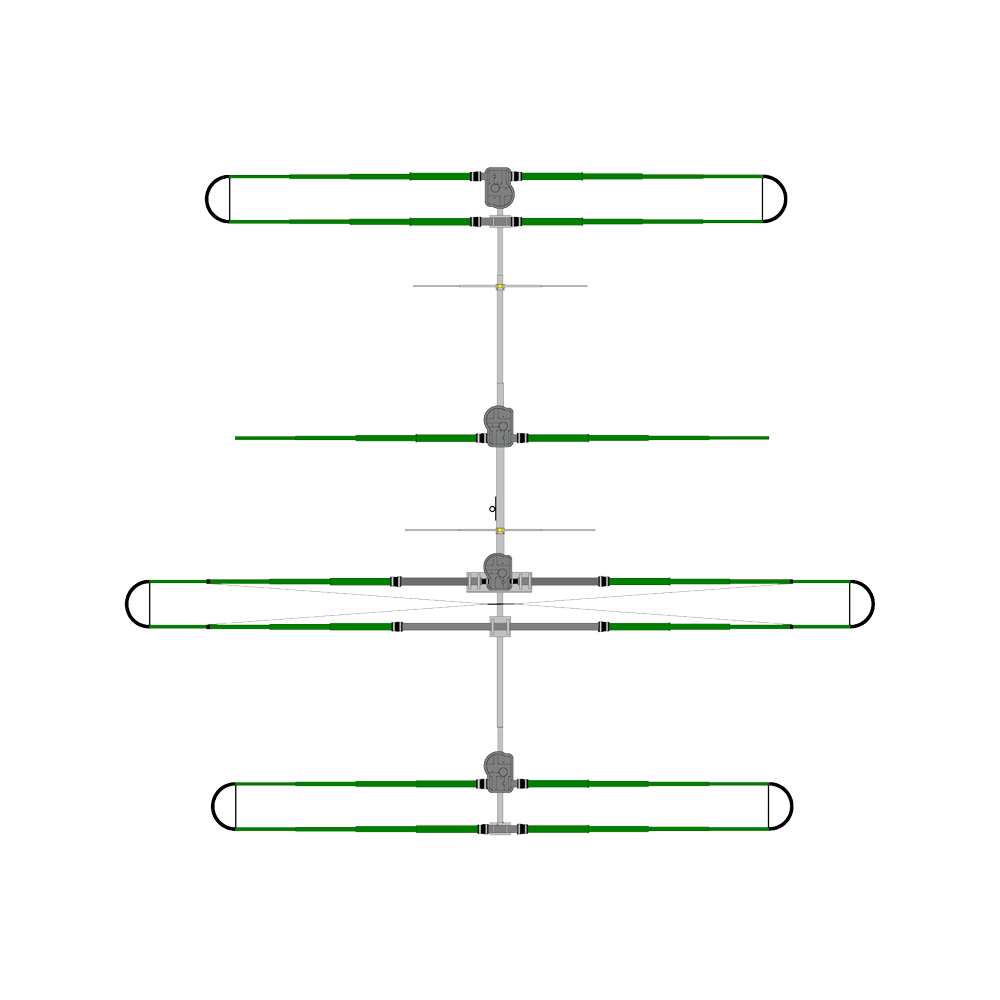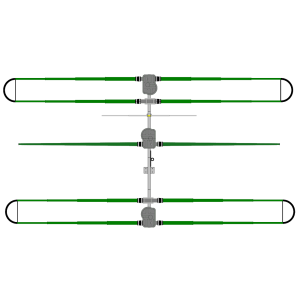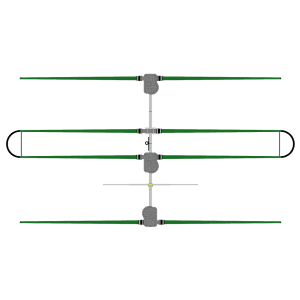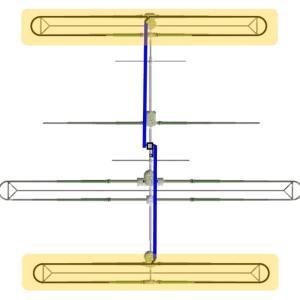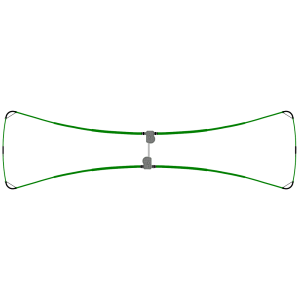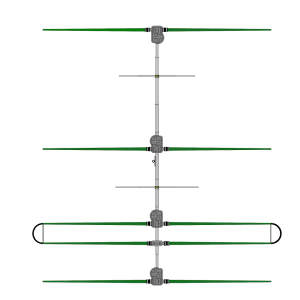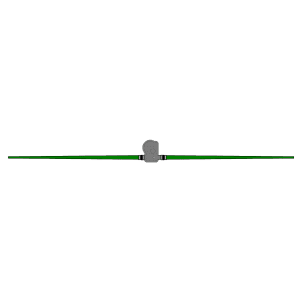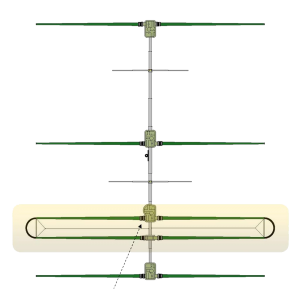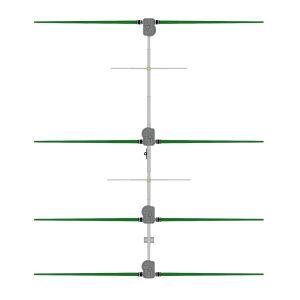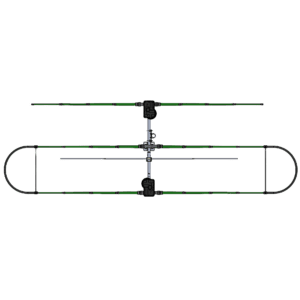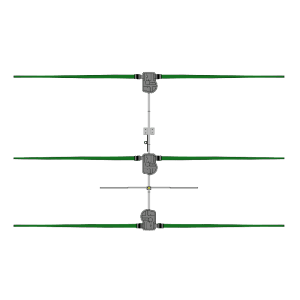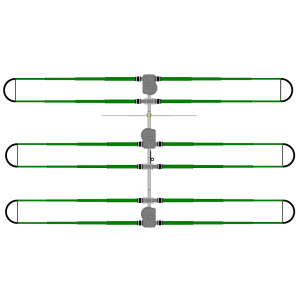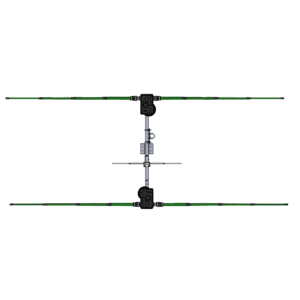Description
The DB36 is part of the DB series Yagi antennas that use loop elements for 40 and 30m performance.
The DB36 packs MonstIR performance into an antenna that turns in nearly half the radius, and is almost half the weight. The DB36 is unique among the DB series antennas in that it has a single feed line, and no relays inside the EHU’s. The DB36 has a 49 ft looped driven element. This patented design allows us to make the end loop elements only 39 feet long, yet the performance is as if all 3 of the loop elements are 49 feet long. The folded dipole loop technology lets the footprint be 40% less than that of the MonstIR Yagi, losing only 0.4dB in gain performance.
The DB36 has a 80/60m dipole that works with the SDA 100 or OptimizIR controller for effortless tuning through the entire 80/60m band. The dipole runs parallel to the boom and uses the end elements as capacity hats, creating zero interaction with the rest of the antenna.
- DreamBeam DB36 Yagi
- 4 el 20-6m
- 3el 40/30m
- 80/60m dipole
- 80-6m continuous coverage
- 36ft boom, 49 ft longest element
- 26 ft turning radius
- 28.59 sq ft projected area
- Weight 160 lb
- Controller options:
-
Weight 160lb / 72.6 kg *Projected Area 28.59 sq ft / 2.66 sq m Longest Element 49 ft / 14.9 m Turning Radius 26 ft / 8.0 m Boom Length 36 ft / 10.97 m Mast Hardware 2.0 in / 5.08 cm Power Rating 3 kW Frequency Coverage 3.4 MHz—54 MHz Cable Requirements 24 conductor 22 ga shielded Tuning Rate 1.33 ft/sec - 0.4 m/sec -
Band dBi Gain (Freespace) dB F/R (Freespace) 80m* 60m* 40m 7.2 21 30m 8.2 18 20m 9.27 21.5 17m 9.88 26.5 15m 10.21 27.1 12 m 10.43 21.1 10 m 10.65 11 6m** 12.75 27.4 * with 80m dipole ** with 6m passive element kit
*Projected area is the total perpendicular surface area measured in square feet/square meters, that is exposed to wind. To calculate wind load you always take the largest projected area whether that is from the perspective perpendicular to the boom or perpendicular to the elements. In the case of SteppIR Yagi’s, the maximum projected area will always be the sum of the surface area’s perpendicular to the Yagi elements. This calculation is a constant number and will not change regardless of EIA specification changes. Do not mistake this projected area calculation as anything more than a data point to present to your structural engineer, tower manufacturer or rotator manufacturer so that they can determine what is necessary for your application.
When sizing an antenna to a tower, many factors need to be taken into consideration including, but not limited to: projected area of antenna in square feet or square meters, weight of the antenna and other items on tower, turning radius, element lengths, antenna height, location exposure category, locations three-second gust wind-speed, locations maximum radial ice loading.
Improper specification of an antenna or rotator to a tower can result in product failure, injury or death. SteppIR is not an expert on tower or rotator sizing and for this reason will never make any kind of a recommendation – this specification process is meant for industry professionals such as a structural engineer, tower manufacturer or rotator manufacturer. Please do not attempt to self-specify our products – the information provided by SteppIR is to be utilized by industry professionals only.
